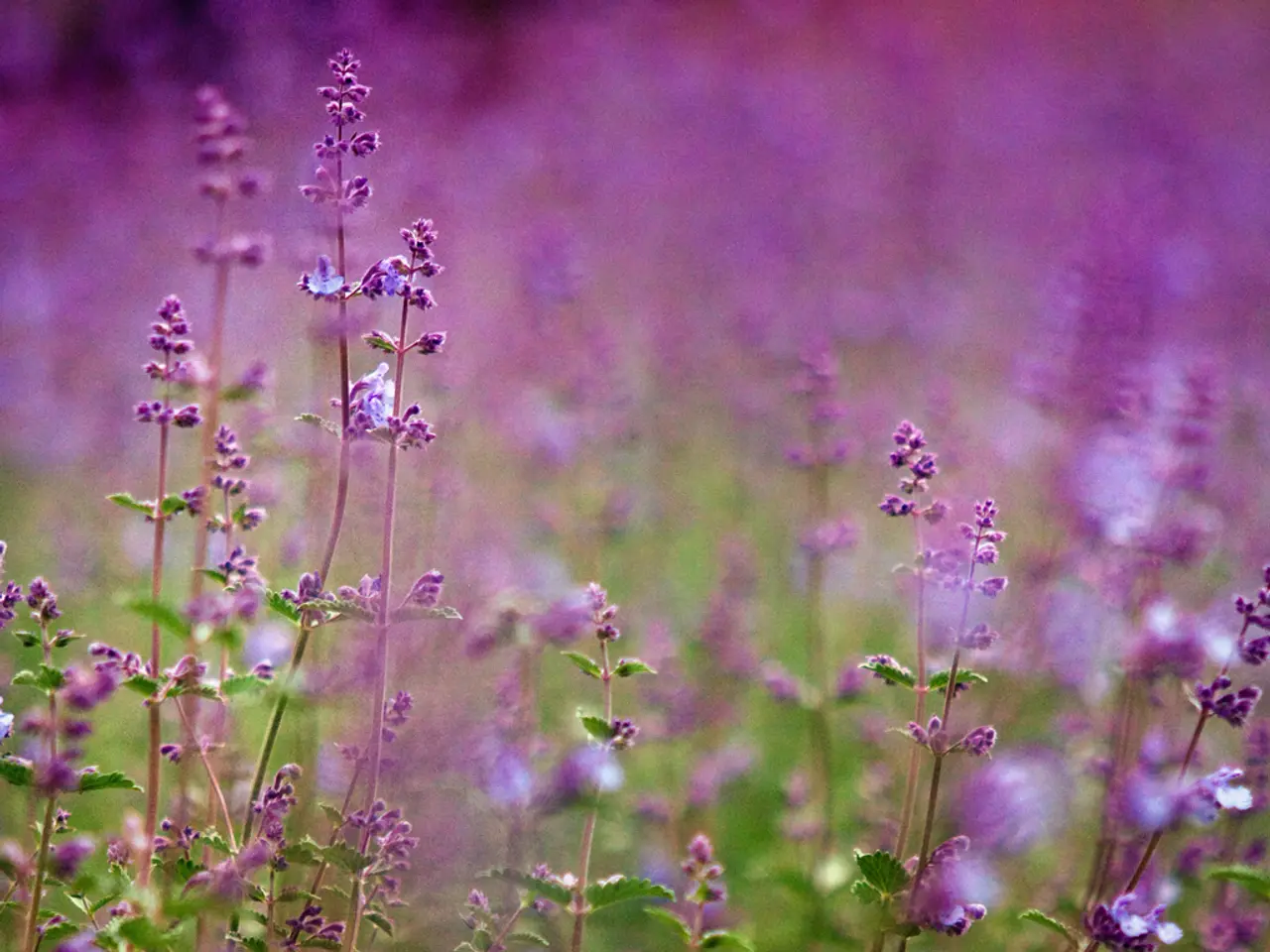Gathering and Preserving Lavender Seeds for Spring Planting
In the world of gardening, collecting and storing lavender seeds can be a rewarding endeavour. Here's a step-by-step guide to help you harvest and preserve these fragrant seeds for future planting.
The Shake Method and The Manual Method are two efficient seed collection methods. The Shake Method involves shaking flower heads or stems in a container, while The Manual Method requires manual manipulation of dried flower heads to extract seeds.
Once you've collected your seeds, it's essential to clean them to remove light, papery debris. A fine mesh sieve can be useful in this process. It's also important to check the viability of the seeds by cracking a few open.
Proper seed storage is crucial to ensure seeds stay viable until planting time. Seeds should be stored in breathable containers like paper envelopes, small cardboard boxes, or mesh seed bags, in a sealed jar or airtight container with a desiccant packet or dry rice, in a cool, dark location.
Avoid exposing your seeds to the three enemies of seed longevity: heat, moisture, and light. Harvest lavender seeds in the morning once the dew has evaporated, but before the heat of the day.
Stratification is a process to improve lavender seed germination by mimicking winter dormancy in the wild. The stratification process involves moistening a paper towel, sprinkling seeds on it, sealing in a plastic bag, and placing in the refrigerator for 3 to 4 weeks. After stratification, seeds should be sown in a well-draining seed mix and placed under grow lights or in a sunny window.
English lavender (Lavandula angustifolia) is an open-pollinated variety that is more likely to produce viable seeds that grow true to type. However, many popular lavender varieties, like Lavandula x intermedia ('Grosso' or 'Provence'), may produce seeds that are sterile or won't grow into plants that resemble the parent.
By following these steps, you'll be well on your way to a bountiful harvest of lavender seeds for future growth. Happy gardening!
Read also:
- Exploring the Digestive Benefits of Fermented Foods
- Senator Rasha Kelej welcomed Maldives First Lady at the seventh installment of the Merck Foundation's First Ladies Initiative Summit to discuss collaborative healthcare programs.
- Quarterly Review of the Biotechnology and Pharmaceutical Industries: A Look Back at Q2 2025
- Summer Fruit Stars of 2025: Blueberries, Tomatoes, and Cherries Lead the Charge




